Resources
 Part of the Oxford Instruments Group
Part of the Oxford Instruments Group
Expand
Collapse
 Part of the Oxford Instruments Group
Part of the Oxford Instruments Group
The MicrostatHe is designed primarily for microspectroscopy. This application requires a minimised working distance and as thin a window as possible (to minimise spherical aberration) for use with high magnification microscope objectives. The OptistatCF-V is designed as an all-purpose cryostat for optical spectroscopy.
The MicrostatHe and OptistatCF-V are based on identical heater, heat exchanger and sample space environments but with different radiation shields and outer vacuum casings which are interchangeable to increase experimental flexibility, see Figure 1.
The OptistatCF-V has a radiation shield containing windows which are maintained at up to 40 K warmer than the heat exchanger, whereas the MicrostatHe has a radiation shield with open apertures rather than windows. This will result in different heat-loads at the sample position for each cryostat.
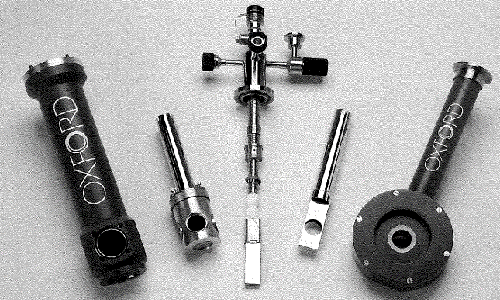
Figure 1: The interchangeable tails of the OptistatCF-V and MicrostatHe cryostats
The MicrostatHe and OptistatCF-V are state-of-the-art temperature environments for optical measurements in the temperature range 2 to 500 K. This article describes the thermodynamic performance of these two cryostats.
There are several important cryogenic issues to consider when choosing an environment for optical measurements:
Here we will discuss each of these points in detail.
A rapid cool-down time maximises experimental productivity. The time to cool the cryostat system from room temperature to 4.2 K was measured. The temperature at both the sample holder and heat exchanger was monitored by installing an additional temperature sensor at the sample position.
The results for the both the OptistatCF-V and the MicrostatHe are shown in Figure 2. The sample holder reached 4.2 K in under seven minutes, demonstrating the cryostat's short cool-down time. Although an initial time lag between sample holder and heat exchanger temperature can be observed, the excellent thermal coupling between sample holder and heat exchanger results in the sample holder temperature 'catching up' before the cryostat reaches 4.2 K.
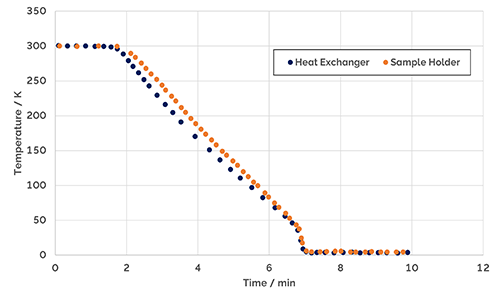
Figure 2: Cool down of the OptistatCF-V and the MicrostatHe from 300 to 4.2 K. Note the high cooling rate of >50 K/min.
It is important to know the temperature difference between the sample position and where the temperature is actually measured, and how this varies with temperature.
This temperature difference between sample and heat exchanger positions has been measured by installing an additional temperature sensor at the sample position. The systematic error in measuring absolute temperature for each temperature sensor was up to 0.2 K for temperatures below 20 K. This error arose from the difference between each individual sensor's resistance-temperature relationship and the linearisation of its calibration into a temperature controller.
Figure 3 shows how the temperature differential between the sample position and heat exchanger, DT, varies with temperature for the MicrostatHe and the OptistatCF-V. The increase at lower temperatures in DT for the MicrostatHe is due to the additional heat load resulting from the absence of radiation shield windows. The important point for cryostat users is that there is no observed temperature difference in the two positions, within the systematic error of the thermometry, for temperatures above 6 K. The curve for the OptistatCF-V clearly demonstrates how radiation windows reduce the temperature difference between sample position and heat exchanger. There is no significant difference in temperature between the sample position and heat exchanger for temperatures down to 2 K.
In conclusion, Figure 3 demonstrates the use of radiation shields for removing sample holder temperature gradients for temperatures below 6 K.
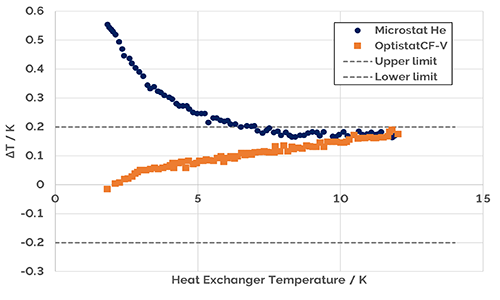
Figure 3: The difference between the sample position temperature and heat exchanger temperature over the temperature range 2 to 12 K, for the MicrostatHe and OptistatCF-V. The area between the two dashed grey lines represents the thermometry's systematic error.
Careful design of both the heat exchanger and the thermal link to the sample holder has resulted in exceptionally good tracking of the sample holder and heat exchanger to the set temperature. Figure 4 shows the very small lag-times before re-establishment of equilibrium conditions at each stepped temperature for both the OptistatCF-V and MicrostatHe.
Such close tracking enables measurements at different temperatures to be carried out quickly whilst minimising helium wastage.
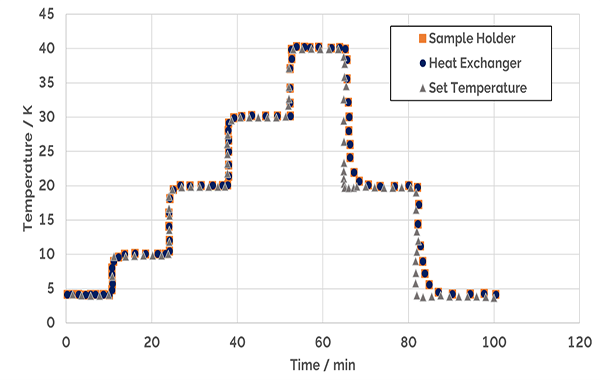
Figure 4: Temperature tracking of the sample holder with changes in requested temperature.
Once the requested temperature has been set, it is important that the sample is held at a constant temperature for the duration of the experiment. The ultimate base temperature, and the time for which this can be maintained, are determined by optimising the system performance of each cryostat component.
The continuous base temperature of the cryostat can be as low as 2 K using a LowLoss technology transfer tube and a rotary pump. Temperatures below 4.2 K are easily set and maintained indefinitely.
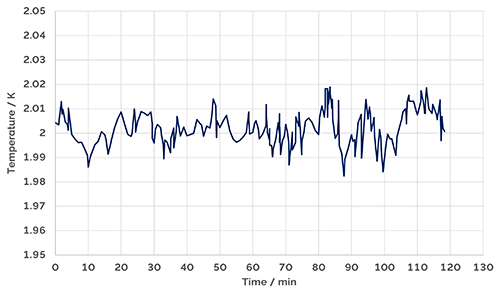
Figure 5: Illustrates the OptistatCF-V cryostat system running for two hours at a stable temperature of 2.00 ± 0.03 K.
For experiments in which the sample is subjected to optical or electrical excitation, it is important to know how much power can be removed by the cryostat whilst maintaining a constant sample temperature.
Figures 6 and 7 show the maximum cooling power for both the MicrostatHe and the OptistatCF-V at flow rates of up to 3 litre/hr and at 1 litre/hr with a standard diaphragm pump, for comparison, a theoretical line is plotted of maximum available cooling power based on a reversible process of cooling, boiling and isobaric heating of the helium, assuming zero losses in both the transfer tube and cryostat prior to reaching the heat exchanger
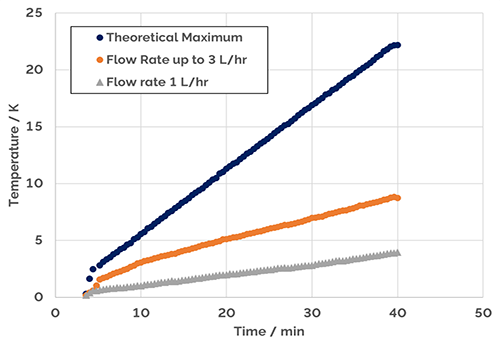
Figure 6: Cooling power as a function of temperature at a helium flow rate of up to 3 l/hr and at a constant helium flow rate of 1 l/hr, using a standard diaphragm pump. The theoretical maximum power available for a flow rate of up to 3 l/hr is drawn for comparison. Figure 7 shows the 3.5 to 10 K detail.
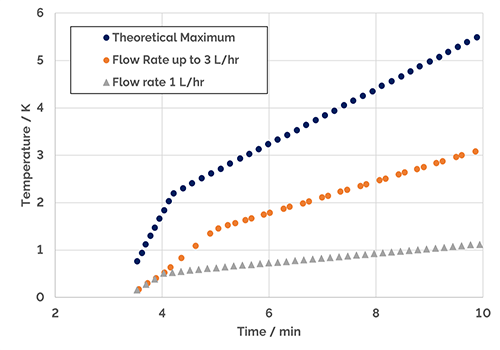
Figure 7: Shows the 3.5 to 10 K detail of Figure 6.
It should be noted that, in practice, a heat dissipation of several watts in a small sample will cause large temperature variations in the sample, irrespective of the cooling power of the cryostat.
Date: August 2022
Author: Simon Mitchinson (Oxford Instruments)
Category: Technical Article
